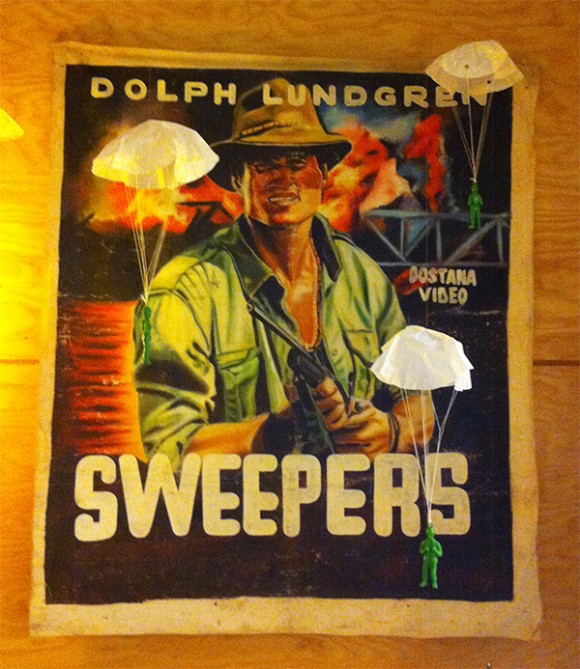You’re Not Ghana Believe This
July 9, 2014

I’ve always worked in a creative environment. An automotive magazine publisher, an in-house marketing and advertising department, and now, Strategic Marketing and Communications at Chapman. One thing all of these environments have in common:
a bunch of crazy stuff on our walls and desks.
I suppose it’s a justification that we “creative” types need all of this junk to fuel our creative endeavors. Really, it’s just an excuse to have a messy workspace. Crude memes, fake name plates, misattributed quotes from Steve Jobs and Bob Dole, a wall of shame, pictures of a certain mustachioed University president, etc. It’s all funny and charming in its own often-tacky way. And sure, maybe it lightens the atmosphere a bit. But every once in a while, something comes along that really does inspire.
The story goes like this. Back in the late ’80s and early ’90s, the country of Ghana saw a rise in what can only be called the mobile movie industry. Some enterprising young Ghanaians took advantage of the growing availability of VHS tapes and an empire was born. From village to village these entrepreneurs would take their library of tapes, their TVs, and their gas-powered generators, showing movies from all over the world. To promote the shows, local artists hand painted the feature films on discarded flour sacks. The VHS cover art is the obvious inspiration in some instances. With some of the posters, though, it’s not clear if the artist had even seen the cover art, let alone the movie. The posters were, well, posted, and after the movie was shown, they were rolled up and taken to the next village.

The posters share several themes. They’re all action or horror movies. Everything is exaggerated. Muscles, guns, explosions, blood. There’s no attempt at realism. But that’s what makes them so great. There’s a certain beauty in their crudeness. That, and their physical condition. You can tell by looking at the posters that they’re well traveled. The fading paint, cracks, scratches, and holes tell of long, dusty journeys through the Ghanaian countryside.
At some point, they became collectible, and made their way into the hands of Chapman donors Jay and Helen Lavely, and Mace Neufield, who gifted Chapman’s Phyllis and Ross Escalette Permanent Collection of Art with a generous number of posters. We in SMC couldn’t contain our glee when we learned of the posters, and adorned many of our walls with the unique, couldn’t-be-replicated-if-you-tried oil paintings. Some have come down and gone back into storage over the months; the result of squeamish people who couldn’t handle the occasional popped-out eyeball or disembodied head. But the true devotees? The believers in bad advertising turned art? We’re still here, being watched over by our silent, brooding, anatomically impossible guardians.
